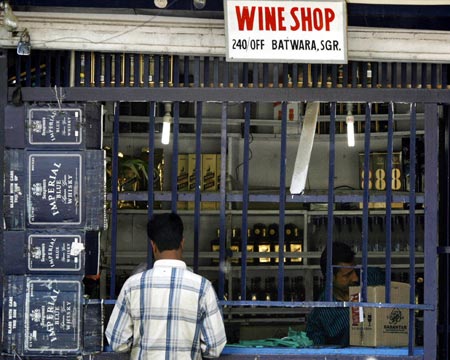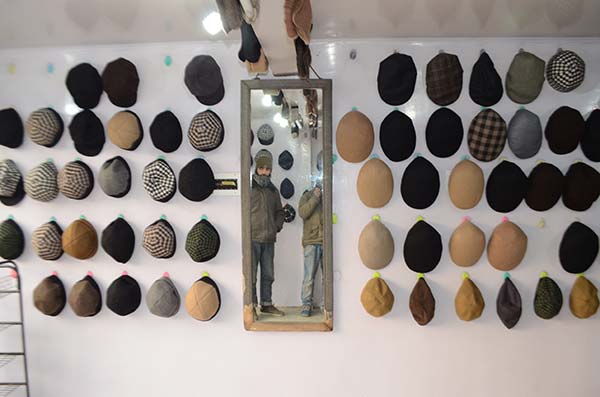All of a sudden, liquor is in sharp focus. Two successive attacks within 24 hours in the twin capital cities of the state have led to new forces’ deployment order and additions to the list of ‘vulnerable infrastructure’. The first attack happened at Heemal complex on Srinagar’s Boulevard, the tourist hub in which a gunman opened fire on the shop. Four persons were injured and one of them later succumbed to injuries in the hospital. The slain, Mushtaq Ahmad, a resident of Aloocha Bagh, was a salesman.
The next attack was on Munish Wine Shop in Narwal belt of Jammu. This time, a grenade was lobbed towards the shop. It killed one person as six other persons were injured. After the twin attacks, the deployment around the liquor depots and wine shops across the state was beefed up and now cops are permanently posted around them.
The new deployment order has added to the list of spots that should be protected now. J&K has a huge liquor infrastructure that Jammu dominates and by and large Jammu consumes. It is essentially a non-Muslim sector with quite a few Muslims actually into it. According to the details made available by the state’s excise department, there are 28 wholesale venders – 27 in Jammu and one in Kashmir. Interestingly the license holder in Kashmir is a Muslim woman. All the 14 wholesale traders who have licenses for manufacturing liquor outside the state are from Jammu.
Of the 163 retail vendors in the state having licenses for IMFL sale to public, there are only five in Kashmir – one in Islamabad and four in Srinagar. Barring one, all the license holders are non-Muslims. In fact, there are only two Muslims having retail license across the state. Besides, there are only two bars in Srinagar besides three clubs where wine is available.
| J&K: The Wine Earnings (₹Lakh) | |||
| Year | Country Liquor | IMFL | Total Excise |
| 1980-81 | 544 | 588.64 | 1132.64 |
| 1981-82 | 599.33 | 888.39 | 1487.72 |
| 1982-83 | 633.08 | 772.33 | 1405.41 |
| 1983-84 | 773.36 | 930.64 | 1704 |
| 1984-85 | 768.71 | 1136.29 | 1905 |
| 1985-86 | 961.05 | 1088.92 | 2049.97 |
| 1986-87 | 1293.18 | 1318.24 | 2611.42 |
| 1987-88 | 1241.42 | 1542.18 | 2783.6 |
| 1988-89 | 1386.85 | 1695.16 | 3082.01 |
| 1989-90 | 1560.13 | 2101.18 | 3661.31 |
| 1990-91 | 1619.12 | 2414.32 | 4033.44 |
| 1991-92 | 2066.28 | 2610.09 | 4676.37 |
| 1992-93 | 2101.6 | 3442.48 | 5544.08 |
| 1993-94 | 2281.46 | 3823.34 | 6104.8 |
| 1994-95 | 3057.97 | 4354.43 | 7412.4 |
| 1995-96 | 4118.42 | 5389.53 | 9507.95 |
| 1996-97 | 1200.65 | 6867.74 | 8068.39 |
| 1997-98 | 3067.88 | 7403.72 | 10471.6 |
| 1998-99 | 3298.05 | 9029.07 | 12327.12 |
| 1999-00 | 3896.76 | 11092.92 | 14989.68 |
| 2000-01 | 4346.28 | 10978.6 | 15324.88 |
| 2001-02 | 4912.01 | 11554.91 | 16466.92 |
| 2002-03 | 7060.73 | 13153.18 | 20213.91 |
| 2003-04 | 7183.81 | 13299.64 | 20483.45 |
| 2004-05 | 0 | 19771.84 | 19771.84 |
| 2005-06 | 0 | 20361.7 | 20361.7 |
| 2006-07 | 0 | 21209.2 | 21209.2 |
| 2007-08 | 0 | 24264.49 | 24264.49 |
| 2008-09 | 0 | 24548.75 | 24548.75 |
| 2009-10 | 0 | 29239.84 | 29239.84 |
| 2010-11 | 0 | 33695.28 | 33695.28 |
| 2011-12 | 0 | 38557.82 | 38557.82 |
| Source: J&K Ministry of Finance | |||
The state finance ministry is offering 22 seasonal licenses for serving liquor to hotels, restaurants and camping sites in Ladakh. Jammu houses all the nine liquor licensing plants. Interestingly, of the 26 licensed molasses importers, 16 are Muslims. Molasses are part of the raw material that goes into the liquor manufacture.
Fight against liquor is nothing new to Kashmir. Along with cinemas, most of this business was dissipated by the militants in 1990 as part of their puritanical campaign. Prior to that, a larger battle was fought in Islamabad against the wine and Shabir Shah owes his prominence to that battle. The sector was revived quite recently.
While the enigmatic attacks have added to the challenges for the security grid, the fall in wine consumption could impact the earnings of the state government. Excise duty continues to be a major contributor to the public kitty in J&K. Against realizing nearly Rs 337 crore in 2010-11, the J&K government made an overall earning of Rs 385 crore from liquor in 2011-12. This all is possible because the consumption is rising. The consumption jumped from 43.389621 million bottles in 2010-11 to 46.671621 bottles in 2011-12. It includes IMFL, Country Liquor, beer and the RTD (ready to drink). A successful tourist year has added to the consumption especially in Kashmir that had more than 1.7 million visitors so far. But the larger reality is that not many Kashmiris are drinking, especially after it died in 1990.














“Security has been beefed up at liquor shops” makes me laugh.
It is surprising that a woman owns a licence for selling liquor in Kashmir and she is the only one in Kashmir division.
This was expected because of the improvement in tourism. People know that in order to get more customers they have to provide alcohol. We have lost the belief that Allah is the only provider and he provides in mysterious ways.
This is why I like to read your articles. You talk about social problems.
Well said Han!!
Wow, that’s a really clever way of thikning about it!